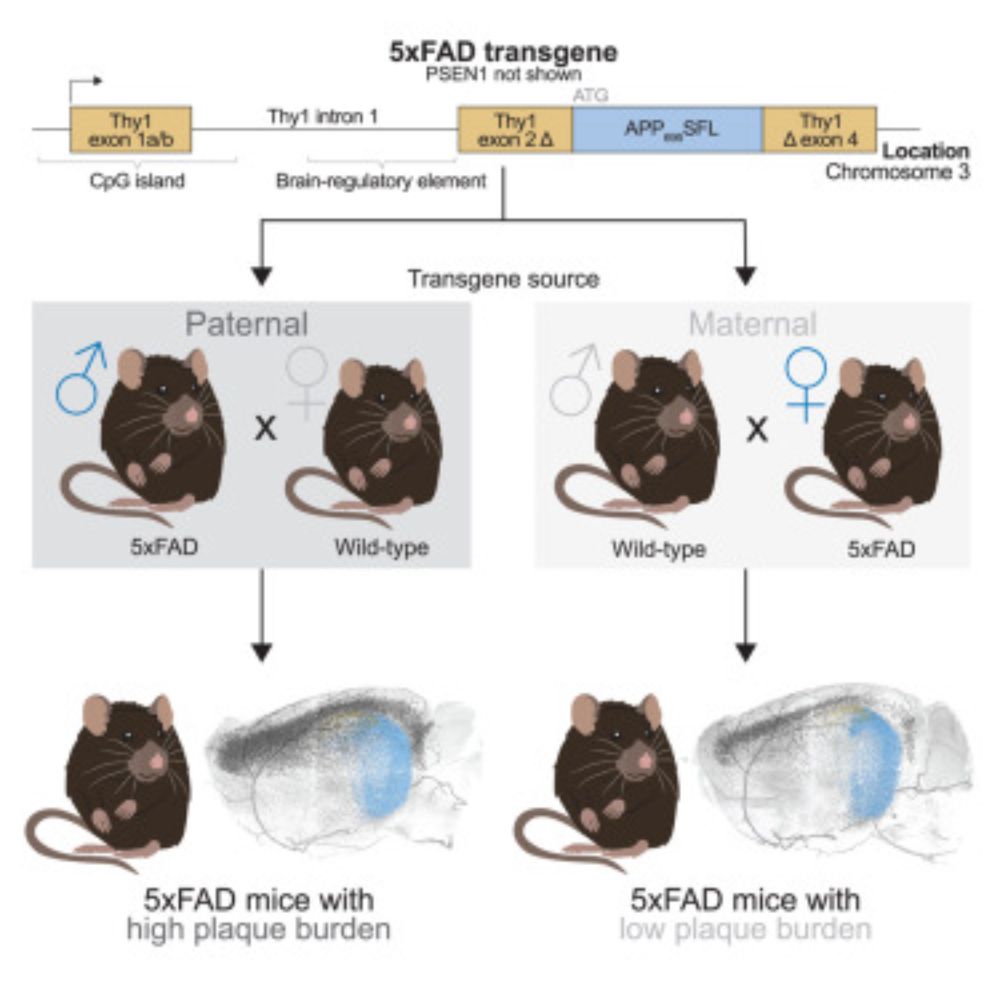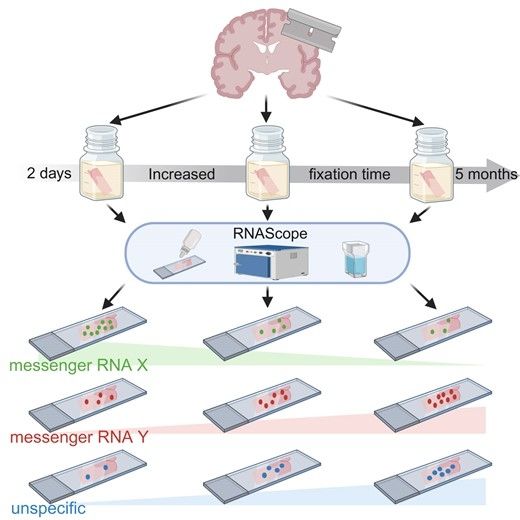
Lena Spieth
@lenaspieth.bsky.social
Postdoctoral researcher at DZNE and TU Munich. Glia enthusiast 🧠 lipid lover 🤿 diver.
Our new paper reveals that chronic active MS lesions feature CD8⁺ T cell niches with lipid-laden, inflamed microglia. IFN-γ drives cholesterol buildup, linking dysregulated lipid metabolism to inflammation and meurodeg.
Check it out @cp-immunity.bsky.social
www.sciencedirect.com/science/arti...
Check it out @cp-immunity.bsky.social
www.sciencedirect.com/science/arti...

Single-cell spatial transcriptomic profiling defines a pathogenic inflammatory niche in chronic active multiple sclerosis lesions
Compartmentalized inflammation is a key driver of multiple sclerosis (MS) progression, but the mechanisms sustaining its persistence remain unclear. A…
www.sciencedirect.com
November 6, 2025 at 6:38 AM
Our new paper reveals that chronic active MS lesions feature CD8⁺ T cell niches with lipid-laden, inflamed microglia. IFN-γ drives cholesterol buildup, linking dysregulated lipid metabolism to inflammation and meurodeg.
Check it out @cp-immunity.bsky.social
www.sciencedirect.com/science/arti...
Check it out @cp-immunity.bsky.social
www.sciencedirect.com/science/arti...
Reposted by Lena Spieth
If you're interested in trafficking of #myelin constituents in #oligodendrocytes, and of course you are, you may want to check out our new preprint. It's very nice PhD work by @sophiesiems.bsky.social, and we're grateful to all who contributed!
www.biorxiv.org/content/10.1...
www.biorxiv.org/content/10.1...

Adaptor protein complex 2 (AP2) participates in biogenesis and homeostasis of myelin sheaths in the central nervous system
Myelination of CNS axons requires oligodendrocytes to undergo extensive morphological changes by producing large amounts of myelin membrane with defined protein composition and structure. The formatio...
www.biorxiv.org
September 3, 2025 at 11:51 AM
If you're interested in trafficking of #myelin constituents in #oligodendrocytes, and of course you are, you may want to check out our new preprint. It's very nice PhD work by @sophiesiems.bsky.social, and we're grateful to all who contributed!
www.biorxiv.org/content/10.1...
www.biorxiv.org/content/10.1...
Reposted by Lena Spieth
How does APOE change your risk of developing Alzheimer's disease? At least partially by changing the function of immune cells in your brain 🧠🧬
New paper out in @natcomms.nature.com today: www.nature.com/articles/s41...
@ukdri.ac.uk @kingsioppn.bsky.social @imperialbrains.bsky.social
New paper out in @natcomms.nature.com today: www.nature.com/articles/s41...
@ukdri.ac.uk @kingsioppn.bsky.social @imperialbrains.bsky.social
https://nature.com/articles/s4146…
May 27, 2025 at 8:33 AM
How does APOE change your risk of developing Alzheimer's disease? At least partially by changing the function of immune cells in your brain 🧠🧬
New paper out in @natcomms.nature.com today: www.nature.com/articles/s41...
@ukdri.ac.uk @kingsioppn.bsky.social @imperialbrains.bsky.social
New paper out in @natcomms.nature.com today: www.nature.com/articles/s41...
@ukdri.ac.uk @kingsioppn.bsky.social @imperialbrains.bsky.social
Reposted by Lena Spieth
A Review on #oligodendrocytes in Alzheimer’s disease pathophysiology from Shreeya Kedia & Mikael Simons 🧪🧠
www.nature.com/articles/s41...
www.nature.com/articles/s41...

Oligodendrocytes in Alzheimer’s disease pathophysiology - Nature Neuroscience
Emerging evidence highlights the dual role of oligodendrocytes in Alzheimer’s disease, both providing protective mechanisms against the pathology and contributing to its progression.
www.nature.com
January 30, 2025 at 1:48 PM
A Review on #oligodendrocytes in Alzheimer’s disease pathophysiology from Shreeya Kedia & Mikael Simons 🧪🧠
www.nature.com/articles/s41...
www.nature.com/articles/s41...
5FAD transgene parentage influences plaque burden. 🐭 Congratulations @aosasmita.bsky.social, @taisiianazarenko.bsky.social @constanze depp and @Klaus-Armin Nave. Happy to have contributed a little.
Are you using 5xFAD mice to study Alzheimer’s disease? Our work out today @cp-neuron.bsky.social may be relevant to you 🐁🧠 Age and sex are known to influence Aβ plaque burden in these mice. Here, we found that the transgene parentage is another strong determinant.
Thread below: (1/11)
Thread below: (1/11)

Parental origin of transgene modulates amyloid-β plaque burden in the 5xFAD mouse model of Alzheimer’s disease
The 5xFAD transgenic model, popular in Alzheimer’s disease research, exhibits varying
cerebral plaque burden depending on the parental source of the transgene. Mice inheriting
the transgene paternally...
www.cell.com
January 20, 2025 at 4:48 PM
5FAD transgene parentage influences plaque burden. 🐭 Congratulations @aosasmita.bsky.social, @taisiianazarenko.bsky.social @constanze depp and @Klaus-Armin Nave. Happy to have contributed a little.
Reposted by Lena Spieth
How does aging affect the white matter and what are the consequences for brain function and neurodegenerative disease? Thankful to see this review with Mika Simons now published in a fascinating collection on the science of brain aging @cp-neuron.bsky.social
www.cell.com/neuron/fullt...
www.cell.com/neuron/fullt...

White matter aging and its impact on brain function
Aging leads to a decrease in white matter volume and damage to myelinated axons, contributing to neurodegeneration. Myelin breakdown can trigger inflammation, creating a vicious cycle that causes further damage. Understanding these changes is key to preventing age-related neurodegenerative disease.
www.cell.com
January 9, 2025 at 8:09 PM
How does aging affect the white matter and what are the consequences for brain function and neurodegenerative disease? Thankful to see this review with Mika Simons now published in a fascinating collection on the science of brain aging @cp-neuron.bsky.social
www.cell.com/neuron/fullt...
www.cell.com/neuron/fullt...
Reposted by Lena Spieth
Did you ever wonder about the role of oligodendrocytes in Parkinson's disease? Check out our new unsolved mysteries article in collaboration with the Burbulla lab! It is quite certain that a lot of work moves in this direction.
journals.plos.org/plosbiology/...
journals.plos.org/plosbiology/...

Are oligodendrocytes bystanders or drivers of Parkinson’s disease pathology?
The major pathological feature of Parkinson ‘s disease (PD), the second most common neurodegenerative disease and most common movement disorder, is the predominant degeneration of dopaminergic neurons...
journals.plos.org
January 8, 2025 at 8:15 PM
Did you ever wonder about the role of oligodendrocytes in Parkinson's disease? Check out our new unsolved mysteries article in collaboration with the Burbulla lab! It is quite certain that a lot of work moves in this direction.
journals.plos.org/plosbiology/...
journals.plos.org/plosbiology/...
Reposted by Lena Spieth
Homeostatic microglia initially seed and activated microglia later reshape amyloid plaques in Alzheimer’s Disease
This further adds to the mounting evidence that microglia are perhaps much better at Aβ plaque formation than plaque clearance. What a fantastic study 🤩
This further adds to the mounting evidence that microglia are perhaps much better at Aβ plaque formation than plaque clearance. What a fantastic study 🤩

Homeostatic microglia initially seed and activated microglia later reshape amyloid plaques in Alzheimer’s Disease - Nature Communications
The role of microglia in Alzheimer’s disease is debated. This paper shows that homeostatic microglia seed amyloid plaques in early disease stages and activated microglia compact plaques at later stage...
www.nature.com
December 6, 2024 at 6:44 AM
Homeostatic microglia initially seed and activated microglia later reshape amyloid plaques in Alzheimer’s Disease
This further adds to the mounting evidence that microglia are perhaps much better at Aβ plaque formation than plaque clearance. What a fantastic study 🤩
This further adds to the mounting evidence that microglia are perhaps much better at Aβ plaque formation than plaque clearance. What a fantastic study 🤩
Fixation time affects RNA scope results in human FFPE brains. Check out this paper from the Jäkel lab!
The first paper of the Jäkel lab is out!
We have shown that the RNA detection in human FFPE brain tissue significantly changes with fixation time. Chose your tissue well before doing an experiment!
doi.org/10.1093/brai...
We have shown that the RNA detection in human FFPE brain tissue significantly changes with fixation time. Chose your tissue well before doing an experiment!
doi.org/10.1093/brai...

Impact of fixation duration on messenger RNA detectability in human formalin-fixed paraffin embedded brain tissue
Hurler et al. performed RNAScope on post-mortem human brain tissue and found mRNA signal detection to be highly dependent on fixation time. Considering the
doi.org
November 29, 2024 at 7:33 AM
Fixation time affects RNA scope results in human FFPE brains. Check out this paper from the Jäkel lab!

